Komentáře / Otázky (141)
![]() BenteThomassen napsala:
BenteThomassen napsala:
Der står at jeg skal tage 30 masker til ærmer på en tråd, men når jeg skal til at strikke ærmerne, så skal jeg dele tråden med 30 masker på 2 pinde. Hvor kommer de andre 30 masker fra
09.07.2025 - 08:24Odpověď DROPS Design :
Hei Bente. Du sætter maskerne over de 30 masker fra tråden også på pinden til ærmet. Mvh DROPS Design
09.07.2025 - 14:20
![]() Lenie napsala:
Lenie napsala:
Het vest wordt met 2 draden gebreid. Waarom dan van de ene kleur 500 gram en van de andere kleur 300 gram. Hoe kan dat?
21.11.2023 - 15:28Odpověď DROPS Design :
Dag Lenie,
De ene draad heeft een andere looplengte dan de andere draad. Dit kan bijvoorbeeld komen doordat de ene draad lichter en/of dunner is dan de andere draad. Uiteindelijk heb je van beide draden in totaal ongeveer dezelfde looplengte nodig.
21.11.2023 - 22:43
![]() Lenie napsala:
Lenie napsala:
U geeft aan dat er 500 Gr van de ene kleur en 300 Gr van de andere kleur nodig heeft. Ik lees dat er met 2 draden gebreide wordt. Wordt het hele vest met 2 draden gebreid of een gedeelte hiervan. Mijn vraag is waarom het verschil van de 2 kleuren in grammen?
21.11.2023 - 15:25Odpověď DROPS Design :
Dag Lenie,
Het gehele vest wordt met 2 draden gebreid; 1 draad van elke kwaliteit. Het andere deel van je vraag is al beantwoord via je een reactie op je andere vraag.
21.11.2023 - 22:45
![]() Kat napsala:
Kat napsala:
I substituted yarns with C group (Nepal). My initial circle is getting wavy. Does it even out in later rows or does that mean I need thinner sock needles? I tried no. 6 by mistake but got a similar effect with no. 5. The test square for sleeves was around 9.5 cm, so it might also mean that I am knitting too tight. Any suggestions?
21.08.2023 - 10:10Odpověď DROPS Design :
Dear Kat, make sure to get the correct tension to get the correct finished measurements - read more here. Repeat then the diagram a total of 8 times in the round (on the first round, repeat *YO, K1*, making sure to increase 8 sts on every other round - note that in this diagram, only every other round is drawn, this means every even numbered row must be worked in stocking stitch/in rib (last 6 rows in diagram). Happy knitting!.
21.08.2023 - 15:02
![]() Anke Rüger napsala:
Anke Rüger napsala:
Ich benötige die Lauflänge der Wolle Cotton -Merino, da diese nicht mehr im Sortiment ist, finde ich diese Information nicht. Ich möchte das Projekt in Big Merino fertigen. Für Ihre Unterstützung bedanke ich mich im voraus. Liebe Grüße Anke Rüger
03.07.2023 - 06:32
![]() Laurence napsala:
Laurence napsala:
Bonjour, j'aimerais tricoter ce modèle en sky taille M, pouvez-vous m'indiquer combien si je dois utiliser 1 ou 2 fils et quelle taille d'aiguilles choisir? Merci!
05.10.2022 - 16:33Odpověď DROPS Design :
Bonjour Laurence, ce modèle peut se tricoter avec 2 fils du groupe A/1 fil du groupe C mais Sky appartient au groupe de fils B. Vous trouverez ici quelques modèles en Sky + Kid-Silk avec 15 m jersey pour 10 cm, mais le nbe de rangs est différent, il vous faudrait alors recalculer le modèle si vous n'avez pas le bon échantillon. Privilégiez un fil du groupe de fils C pour plus de simplicité - retrouvez ici plus d'infos pour faire les calculs des nouvelles quantités. Bon tricot!
06.10.2022 - 08:08
![]() Zuzana napsala:
Zuzana napsala:
Dobrý deň, nerozumiem ako dosiahnem na rukáv 42 ociek. V návode sa odkladá na rukáv len 21. Ďakujem za pomoc
28.01.2022 - 18:32Odpověď DROPS Design :
Hi Zuzana, if you could write your question in English, we will try to answer :)
22.04.2022 - 11:45
![]() Patty napsala:
Patty napsala:
Would it be possible to provide chest measurements for each size? I'm not 100% sure if I would need a M/L or an XL. Thank you!
22.08.2021 - 01:44Odpověď DROPS Design :
Dear Patty, all the relevant measurements are given on the schematic drawing. It would be difficult to give an exact chest measurement, because due to the shape of the sweater it can be closed so, that it allows you slightly adjust the size (you can cross it deeper with more crossing). Happy stitching,
22.08.2021 - 02:08
![]() Conny napsala:
Conny napsala:
Wanneer je de steken voor de mouw hebt gebreid, meerder je dan de steken weer in de volgende naald? Het is me niet duidelijk. Ik heb hier in de vragen gezocht en niets gevonden en ik zie het ook niet in de beschrijving.
23.02.2021 - 12:57Odpověď DROPS Design :
Dag Conny,
Je breit de steken voor de mouwen in een andere kleur en op de volgende naald brei je de steken weer in de kleur waar je mee breit. Als je de mouwen gaat breien neem je steken op waar je met een andere kleur hebt gebreid en haal je die draad eruit. Je zet dus geen steken op in de volgende naald, maar je breit verder over die andere kleur.
02.03.2021 - 09:06
![]() Patty Ricci napsala:
Patty Ricci napsala:
If you wanted to make this with only one type of yarn what would the weight be (in US terms, please)? I can't figure out if it would be worsted or not since one strand is a sport weight and the other one is a DK weight. Thank you!
02.09.2020 - 22:16Odpověď DROPS Design :
Dear Mrs Ricci, this pattern is here worked with 2 strands yarn group A and they could be replaced with one strand yarn group C - read more about altenatives here ; do not hesitate to contact your DROPS store - even per mail - for any further individual assistance choosing the yarn. Happy knitting!
03.09.2020 - 08:56
Stella Marina |
|||||||||||||||||||
 |
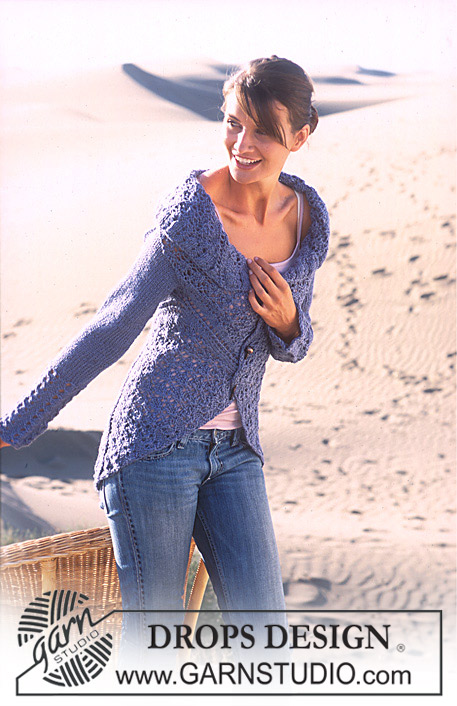 |
||||||||||||||||||
DROPS kabátek vycházející z kruhu jako „umělecké dílo“ z příze „Alpaka“ a z příze „Cotton Viscose“.
DROPS 94-5 |
|||||||||||||||||||
|
KRAJKOVÝ VZOR: Viz schéma M. 1 – každá velikost má svoje schéma. Schéma zobrazuje 1/8 dílu a každou druhou řadu. Řady 2, 4, 6 a další sudé řady pleteme kolem patentu lícovým žerzejem (= posledních 6. kruhových řad pleteme podle schématu), dále pleteme hladce nad hladkými oky, obrace nad obrace pletenými oky, patent tak bude mít celkem 11. kruhových řad. M. 2 = patent na rukávech. ---------------------------------------------------------------------- PŘEDNÍ A ZADNÍ DÍL: Kabátek je pletený v kruhových řadách od středu na zadním díle. Dvojitou přízí = 1 vlákno Cotton Viscose + 1 vlákno Alpaka nahodíme na krátké ponožkové jehlice č. 5 8 ok, oka rozdělíme na 4 jehlice. Pleteme vzorem podle schématu M. 1 – viz popis výše. V každé druhé řadě přidáme dle vzoru 8 ok – v okamžiku, kdy je na ponožkových jehlicích dostatečný počet ok převedeme práci na kruhovou jehlici. VELIKOST S/M: Průramky tvarujeme od šipky na schématu: 1x nahodíme, 2 oka spleteme hladce, 1x nahodíme (3 první okýnka na schématu). 21 ok upleteme hladce a odložíme na odlišnou přízi (tato příze bude později odstraněna a rukáv budeme plést směrem k zápěstí). 63 ok upleteme podle vzoru, dalších 21 ok upleteme hladce a odložíme na odlišnou přízi (= druhý průramek). Dále pleteme podle vzoru. VELIKOST M/L: Průramky tvarujeme od šipky na schématu: 1x nahodíme, 2 oka spleteme hladce, 1x nahodíme (první 3 okýnka na schématu). 26 ok upleteme hladce a odložíme na odlišnou přízi (tato příze bude později odstraněna a rukáv budeme plést směrem k zápěstí). 67 ok upleteme podle vzoru, dalších 26 ok upleteme hladce a odložíme na odlišnou přízi (= druhý průramek). Dále pleteme podle vzoru. VELIKOST XL: Průramky tvarujeme od šipky na schématu: 1x nahodíme, 2 oka spleteme hladce, 1x nahodíme (první 3 okýnka na schématu). 30 ok upleteme hladce a odložíme na odlišnou přízi (tato příze bude později odstraněna a rukáv budeme plést směrem k zápěstí). 72 ok upleteme podle vzoru, dalších 30 ok upleteme hladce a odložíme na odlišnou přízi (= druhý průramek). Dále pleteme podle vzoru. V poslední kruhové řadě schématu oka uzavřeme. V kruhové řadě uzavíráme celkem 448-496-544 o. Díl měří asi 50-55-60 cm od středu (=100-110-120 cm v průměru). RUKÁV: Na jehlici vrátíme odložená oka. Rukáv pleteme v řadách dokola, směrem k zápěstí. Ve středu řady přízi rozstřihneme a na dvě jehlice oka nabereme (následně odlišnou přízi vytáhneme) = 21-26-30 ok na každé jehlici. Všechna oka přesuneme na krátkou kruhovou jehlici = 42-52-60 ok. Nabereme 4. nová oka, oka nabíráme ve vrcholu rukávu, v místě, kde jsou si oba rukávy nejblíže – a 2. nová oka nabereme v podpaží = 48-58-66 ok. Plést začneme v podpaží, toto místo si označíme značkou. Pleteme 1. Kruhovou řadu obrace a dále pleteme lícovým žerzejem. Ve výšce 4 cm uzavřeme z každé strany značky vždy 1 oko. Ujímání opakujeme každých 6-4-2.5 cm celkem 6-8-12 krát = 36-42-42 ok. Ve výšce 34 cm pleteme vzorem M. 2. Ve výšce 52 cm oka volně uzavřeme – uzavíráme po dokončení 4., 8. nebo 12. řady vzoru. POZN. Před uzavřením rukávu kabátek vyzkoušejte. |
|||||||||||||||||||
Vysvětlivky ke schématu |
|||||||||||||||||||
|
|||||||||||||||||||
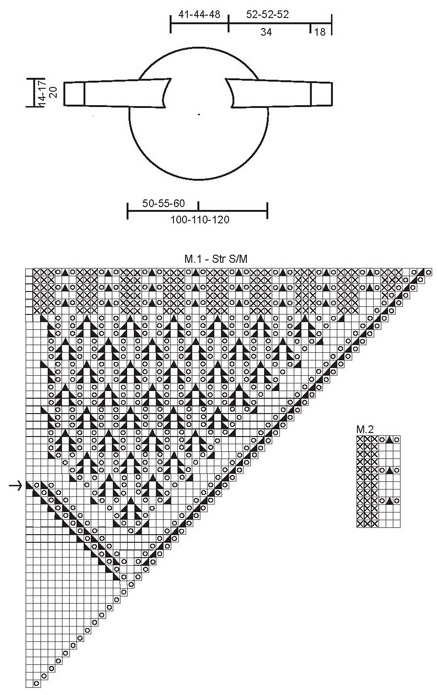
|
|||||||||||||||||||

|
|||||||||||||||||||
Dokončili jste tento model?Pak označte své fotky tagem #dropspattern nebo je pošlete do galerie #dropsfan. Potřebujete s tímto návodem poradit?Otevřete-li si návod na stránce garnstudio.com, najdete tam 16 výukových video-ukázek, Komentáře/Dotazy a další užitečné informace. © 1982-2025 DROPS Design A/S. Vyhrazujeme si veškerá práva. Tento dokument, včetně všech jeho dílčích částí, podléhá autorským právům. Podrobnější komentář k možnostem užití našich návodů najdete dole pod každým návodem na našich stránkách. |
|||||||||||||||||||








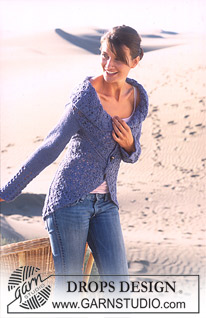



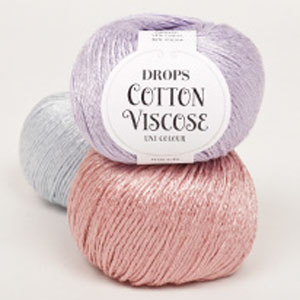



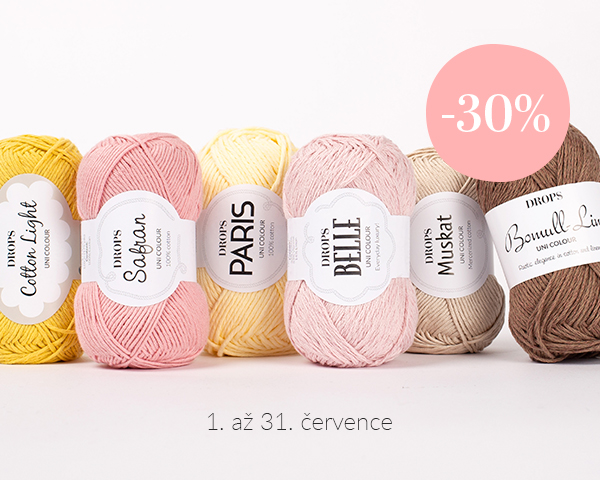


































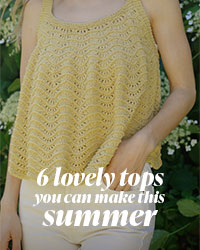

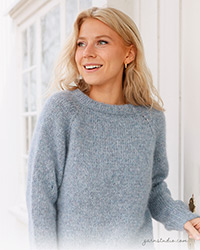
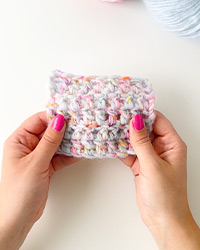
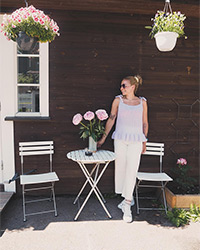
Přidejte komentář k návodu DROPS 94-5
Rádi bychom věděli, co si o tomto modelu myslíte!
Pokud se chcete na něco zeptat, dbejte prosím na to, abyste ve formuláři níže vybrali správnou kategorii - díky tomu se dříve dozvíte, co potřebujete vědět. Povinná pole jsou označena *.